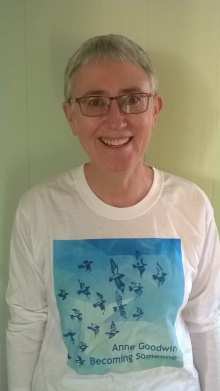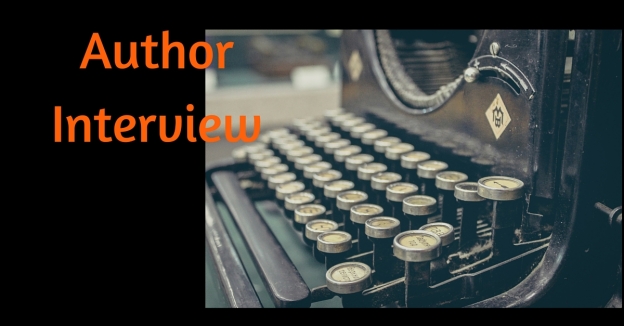This week I am delighted to welcome fellow writer Anne Goodwin to my blog. Anne Goodwin’s debut novel, Sugar and Snails was shortlisted for the 2016 Polari First Book Prize. Her second novel, Underneath, was published in 2017. Her short story collection, Becoming Someone, on the theme of identity launches on Facebook on November 23rd, 2018, where the more people participate the more she’ll donate to Book Aid International. A former clinical psychologist, Anne is also a book blogger with a particular interest in fictional therapists.
Website: annegoodwin.weebly.com
Twitter @Annecdotist.
Here Anne talks about putting her first collection of short stories together for publication.
 Many years ago, when I was carving out a space to write fiction, a creative writing tutor recommended I begin putting a short story collection together. Despite knowing very little about publishing at the time, I was aware that short story anthologies are hard to sell in the UK. So I shrugged my shoulders and continued submitting my efforts to individual magazines.
Many years ago, when I was carving out a space to write fiction, a creative writing tutor recommended I begin putting a short story collection together. Despite knowing very little about publishing at the time, I was aware that short story anthologies are hard to sell in the UK. So I shrugged my shoulders and continued submitting my efforts to individual magazines.
By the time my debut novel, Sugar and Snails, was published in 2015, I had over sixty short stories in multi-author collections and/or print and internet magazines. I even had a couple in translation – Swedish and Hungarian if you’re wondering – which is yet to happen with either of my novels. But I didn’t consider putting together a collection until my publisher at Inspired Quill suggested it. What writer isn’t flattered to be asked to submit? I decided if Sara-Jayne Slack was prepared to invest time and money in an anthology, I ought to delve in.
It wasn’t until my second novel, Underneath, was published that I had the headspace to revisit my short fiction with an anthology in mind. By then I had around ninety stories – most already published, some still in draft and some doing the rounds – begun over a period of fifteen years. Each having emerged from a separate seed of inspiration, it was a new experience to go back and select a sample not only for their individual qualities but for how they’d fit together as a whole. Like arranging a vase with flowers from different seasons or furnishing a room with both contemporary pieces and antiques.
Or perhaps my stories weren’t so disparate. I knew I kept returning to familiar themes. Perhaps my collection would be like a colour-co-ordinated bouquet. But which colour – or theme – would incorporate the most alluring flowers?
In conjunction with my publisher, I settled on the theme of identity, being broad enough to encompass a range of interpretations around a coherent central idea. How do we become who we are and how that does that change across time and circumstance? How do we manage the gap between who we are and who we would like to be or who others feel we ought to be? How much control do we have over our identity and is it a role bestowed on us by others or something that arises from within? These kinds of questions are consistent with my background as a clinical psychologist. They’re also explored within my debut novel.
After drawing up a list of potential candidates, I set about self-editing. A major difference between this and preparing my novels for submission was that 70,000 words of short pieces  contains many more characters and plots than a novel of similar length. What if I had repeated myself? Once the stories were in a single document it was relatively simple to eliminate duplicate character names, but echoes of imagery or phrasing are trickier to detect. Multiple reads and an eagle-eyed editor certainly help.
contains many more characters and plots than a novel of similar length. What if I had repeated myself? Once the stories were in a single document it was relatively simple to eliminate duplicate character names, but echoes of imagery or phrasing are trickier to detect. Multiple reads and an eagle-eyed editor certainly help.
Following submission, my publisher asked for a statement of how each story fit the theme and a little more editing of some to make that fit tighter. This helped us both develop a stronger sense of what the collection is about and my personal concept of identity as a dynamic process that evolves in relationship with the self and with others. Around this point we also agreed that there was a gap in relation to religious identity (easily filled as I already had the completed stories touching on the topic) and that, although it’s inevitable that some stories would be stronger than others, one, despite perfectly encapsulating the theme, didn’t make the grade.
More detailed editing from my editor followed. The stories having gone through multiple edits already, a few courtesy of the editors of magazines, the collection required fewer alterations than my novels, and definitely fewer passages to cut. On the other hand, some elements of some stories needed a lot more back and forth until they hit the right note.
A satisfying short story depends on nuance; some of mine benefited from a few extra words to hone the resolution while still leaving sufficient space for the reader to draw her own conclusions.
One of the difficulties I encountered in writing my first novel was finding the right structure for the story I wanted to tell. When it came to the collection, while structure wasn’t a problem for the individual pieces, structuring the whole required some thought. In what order should the stories appear to make for the most satisfying read? With a novel, strategically placed crises keep the reader turning the page. But there’s no parallel for this in an anthology. To end one story, like a teasing chapter, on a cliffhanger doesn’t entice readers into the next tale with new characters and setting.
Having already agreed a title change from Being Someone to Becoming Someone to reflect identity as process, my publisher suggested arranging the stories to reflect increasing confidence of the main character in their sense of who they are. Thus the process of reading might follow the process of identity formation, such that the book itself becomes much more than the sum of its component parts. But when the stories weren’t written to illustrate this development, and when most stories contain a process within themselves, a challenge to achieve. Have we pulled it off? That’s for readers to judge.
Becoming Someone published 23rd November, 2018 by Inspired Quill
Paperback ISBN: 978-1-908600-77-6 / 9781908600776
eBook ISBN: 978-1-908600-78-3 / 9781908600783
Author page at Inspired Quill publishers http://www.inspired-quill.com/authors/anne-goodwin/
Facebook launch in support of Book Aid International https://www.facebook.com/events/285314412085573/
Drop in at your own convenience wherever you are in the world, I’ll be here to entertain you from morning coffee to pre-dinner drinks.
The more actively people participate, the more I’ll donate to Book Aid International.
Sugar and Snails promotion My debut novel is discounted to 99p or equivalent (Kindle version) throughout November viewbook at Sugar and Snails


It’s interesting to hear how the publication process differs between novels and short stories. Having done neither, it’s something I hadn’t considered, but find it fascinating anyway.
LikeLiked by 1 person
Thanks Norah for stopping by. Yes, it’s unfortunate that publishers are so much less interested in short stories. ‘They don’t sell’ is always the excuse, but I don’t believe it, most readers would be happy with a well put together collection. I hope Anne’s collection finds its readers.
LikeLiked by 2 people
I hope so too, Kate. I have a few collections of short stories on my shelves – some by the one author and some by various authors.
LikeLiked by 1 person
Thank you both for your support and encouragement. I think I was very lucky to have a publisher who was keen to put in the work to hopefully bring my stories to a wider audience. It’s been an extremely rewarding experience.
LikeLike